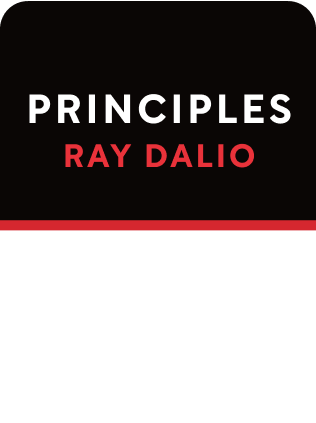

This article is an excerpt from the Shortform summary of "Principles: Life and Work" by Ray Dalio. Shortform has the world's best summaries of books you should be reading.
Like this article? Sign up for a free trial here .
How does personality influence teamwork? How can you make use of personality typing to build an effective team?
Personality complementarity is a key aspect of effective teamwork. If you want to assemble a successful team, you should identify the personality types of the contenders and match them according to how well they work together.
Here is how personality typing can make help you assemble an A-star team.
Personality and Teamwork
A key part of working with others is figuring out their personality. Teamwork will flow much more effortlessly if the people on your team complement—not clash—with each other.
As a team manager, you need to understand the strengths and weaknesses of yourself and other people to get the best results out of everyone. People with complementary strengths do better work together than separately. For example, a visionary and an executor can accomplish more together than each can individually.
- Managers who don’t understand people’s thinking styles won’t understand how their team will behave in different situations. This is like a construction foreman not understanding how his equipment works.
- Instead, see yourself as the conductor of an orchestra. You bring in people at the right moments and in the right balance to execute your vision.
How do you actually figure out people’s personality types? Ray Dalio is a big fan of personality assessments. Here are the assessments he mentions in Principles:
- Myers-Briggs Type Indicator
- This assesses a person’s position along four axes: Introversion/Extraversion, Sensing/Intuition, Thinking/Feeling, and Judging/Perception.
- Big Five
- This assesses a person’s position along five factors: Openness to experience, Conscientiousness, Extraversion, Agreeableness, and Neuroticism.
- Workplace Personality Inventory
- This assesses traits of persistence, independence, stress tolerance, analytical thinking, achievement orientation, and concern for others.
- Team Dimensions Profile
- This categorizes people into different profiles: creators, refiners, advancers, executors, and flexors.
- Stratified Systems Theory
- This studies the level of complexity at which people perform best. Some work best in transactional roles, focusing on executing daily items and acting in the present. Others work best on high-level strategy over long time horizons and deal with high uncertainty. Others work best in between at a supervisory level, developing the plans that the transactional levels execute.
Understanding People With Their Types
Taking the results of a person’s personality assessment, you could then combine traits to form an archetype about the person. This might include the head-in-the-clouds Visionary, the impractical Artist, the tidy Perfectionist, the Wise Judge, the reliable Bedrock, and so on. But do you actually know how to deal with different personalities in life? And what does it take to learn how different personalities approach teamwork?
Ray Dalio takes archetypes a step further with his baseball cards tool, which describes at a glance how a person thinks and behaves. Each baseball card assigns attributes like “conceptual,” “creative,” and “determined.” It also assigns tendencies for behavior, like “holds others accountable” and “pushes through to results.”
Combined with the person’s archetype and personality assessment, the baseball card gives a clear narrative of how the person will behave, and how they fit into a team. For example, a person might have a Myers-Briggs type of S (for Sensing, meaning more concerned with concrete details) and a J (for Judging, meaning more structured and orderly). She might also have an “executor” archetype. It’s then clear what this person is best suited for—conscientious execution of detailed plans.
Once you understand yourself and other people to this level of detail, you can form a dream team of people with complementary strengths.
Psychometric Testing
Dalio says that people think and behave in very different ways. Understanding what type of person you are, and what type of people your co-workers are, is critical to working well together.
To determine potential employees’ personality types, Bridgewater has them undergo psychometric assessments, such as the Myers-Briggs Type Indicator. The information allows the firm to determine which jobs are best suited to the applicants.
(Shortform note: Eighty-nine of the Fortune 100 companies use the Myers-Briggs test, whether during the hiring process or in training. But experts have disregarded this test for several reasons. Apart from being developed by people who had no formal training in psychology, it’s also based on untested theories, produces inconsistent results, and relies solely on binary outcomes—you’re either introverted or extroverted, feeling or thinking, nothing in between.)
Personality Profiles
Dalio found that just knowing employees’ personality types wasn’t enough to form a clear picture of what they were like. People would enter meetings and ignore each other’s personality differences, assuming everyone was equally good at all tasks and assigning jobs to people who didn’t have the right skills. For example, someone who didn’t care about details might be given detail-oriented tasks.
To make the differences between his people’s skills and abilities more explicit, Dalio started making personality profiles (what he called “baseball cards”) that showed each person’s strengths and weaknesses, along dimensions like inquisitiveness, outgoingness, conflict resolution ability, and assertiveness. He’d compare data from the personality profiles with the key qualities necessary to different tasks to decide which people were best suited for which jobs.
This level of transparency met with resistance at first because people were afraid that their profile would misrepresent or pigeonhole them. However, over time the Bridgewater team found it freeing because they could be true to themselves and not have to hide their weaknesses.
(Shortform note: While Dalio believes that showing and discussing weaknesses is important, a study suggests that being vulnerable can undermine your credibility if you’re in a leadership position. So, instead of showing everyone how vulnerable you are, author Brené Brown suggests having a small group of people that you can confide in. That way, you still reap some benefits of showing weaknesses, but you protect your wider reputation.)

———End of Preview———
Like what you just read? Read the rest of the world's best summary of Ray Dalio's "Principles: Life and Work" at Shortform .
Here's what you'll find in our full Principles: Life and Work summary :
- How Ray Dalio lost it all on bad bets, then rebounded to build the world's largest hedge fund
- The 5-step process to getting anything you want out of life
- Why getting the best results means being relentlessly honest with everyone you work with






